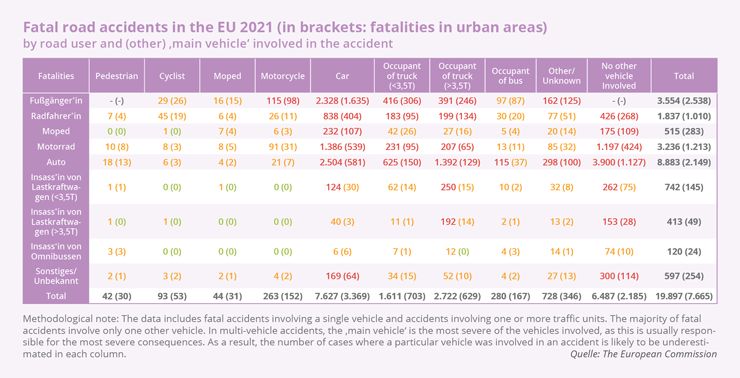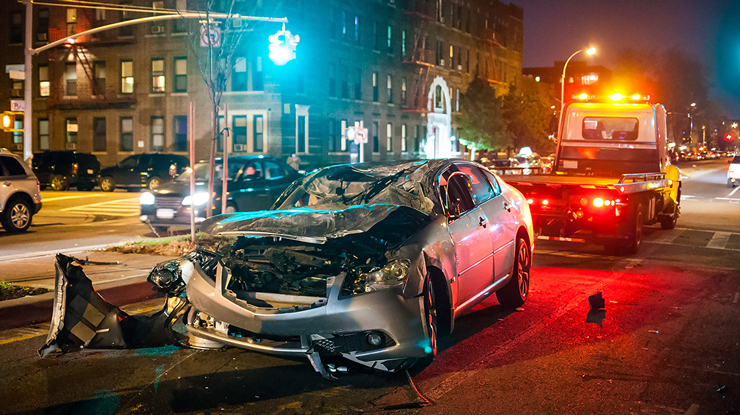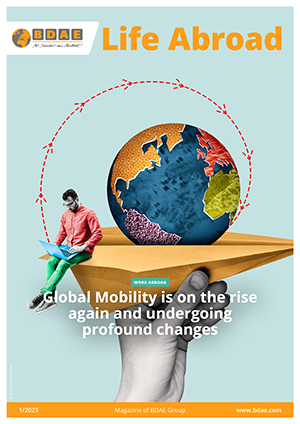The numbers of fatal road accidents in Europe is increasing
Around 20,600 people were killed in road accidents across the EU in 2022 - an increase of three per cent compared to 2021, when traffic volumes had increased again after the pandemic-related decline.
Across the EU, on average, 46 people died on the roads per million inhabitants in 2022. That number was around 34 per million inhabitants in Germany. Compared to 2019, however, there were 2,000 fewer road deaths across the EU. These figures were published by the EU Commission in its preliminary data on road traffic victims in 2022.
Contrasting trends in the member states
Many of the positive trends achieved in the Covid 19 period (including a 17 per cent decrease in the number of road kills between 2019 and 2020) are still present. The number of deaths in 2022 was 10 per cent lower than in 2019.
However, the progress made by Member States presents a very mixed picture. The greatest successes (with a decrease of over 30 per cent) were recorded in Lithuania and Poland, and the decrease in Denmark was of 23 per cent. In contrast, the numbers of road traffic fatalities in countries such as Ireland, Spain, France, Italy, the Netherlands, and Sweden have hardly changed or even increased over the last three years.
The overall ranking of countries by road death rate has not changed significantly from pre-pandemic levels. In 2022, the safest countries are Sweden (21 deaths per million population) and Denmark (26 per million), while Romania (86 per million) and Bulgaria (78 per million) had the highest death rates.

Men most likely to be victims across Europe
Based on data available for the EU as a whole for 2021 (detailed data for 2022 are not yet available), 52 per cent of road traffic fatalities occurred on rural roads, 39 per cent in urban areas and nine per cent on motorways. More than three quarters (78 percent) of road traffic fatalities were male. 45 per cent of all road traffic fatalities were car occupants (driving or riding), 18 per cent pedestrians, 19 per cent users of motorised two-wheelers (motorbikes or mopeds) and nine per cent cyclists.
In urban areas, mainly cyclists among the victims
However, the picture is completely different for urban areas, where non-motorised drivers account for almost 70 percent of all road traffic fatalities. Fatal road traffic accidents in cities occur predominantly with passenger cars and trucks, which makes it clear that the protection of non-motorised road users must be improved.
While it is very welcome that the share of cycling in the mobility mix has increased in many Member States, the trend in the number of cyclists killed on EU roads is a serious problem. This is the only group of road users that has not seen a significant decrease in the number of casualties over the last decade, mainly due to the still poorly developed infrastructure. For example, preliminary figures from France for 2022 show that the number of fatalities while cycling has increased by 30 per cent compared to 2019.
 © PhotoSpirit, AdobeStock
© PhotoSpirit, AdobeStock
Background info: in 2018, the EU set a target to halve the number of road deaths - and, for the first time, serious injuries - by 2030. This was set out in the Commission's Strategic Road Safety Action Plan and the EU Road Safety Policy Framework 2021 - 2030, which also outline road safety plans that aim to achieve the 'vision of zero road deaths' by 2050.

